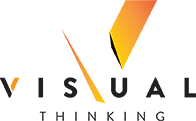
THE TRANSLATION OF INFORMATION INTO BEHAVIOR
The world of work shares a single basic transaction, used millions of times a day: The translation of vital information into human behavior. But operationalizing this formula is not that simple. Workplace information can change quickly and often—schedules, customer requirements, engineering specifications, operational methods, tooling and fixtures needs, material location, and the thousands of other details on which daily life in the enterprise depends.
To share that information, most companies depend on OJT (on-the-job) and classroom training, binders of SOPs, reference manuals, online instruction, and blueprints to share that information—followed by lots of supervisors and managers to answer our many questions. These are indirect methods, with varying levels of effectiveness.
The belief is that once we get the right information, we will do the right things, the right way, on time and safely. We will behave in keeping with that information and good things will result—namely, well-made products, delivered on time and/or well-provided services, presented with a smile. Those same companies assume these indirect methods are capable of translating vital information into exact behavior.
Unfortunately, that is rarely the case. Other things happen instead.
You begin your day determined to produce outstanding results—then the unexpected happens: you grab the wrong material (or the wrong material is delivered and you didn’t know it); you made the wrong model (because you couldn’t quite make out the work order); you use the wrong tool (because the right one could not be found); you over-heat the part (because the gauge on the oven had slipped); and so on and so forth. You intended to do the right thing—but the wrong things happened.
What would it be like if the physical workplace itself could help make that translation, instead of books, manuals, computers, training hours, coaching, and so on? What would your work day be like if the floors, instead of just holding you up, actually helped you do your work, actively and precisely? What would it be like if the walls assisted you in that—as well as the tools, tables, shelves, carts, materials, machines and other objects in your work area? What if they too became active partners in helping you reach your daily work outcomes—safety, quality, cost, delivery—day after day, week after week, year after year?
This is exactly what happens when we create a visual workplace. When we populate the physical work environment with visual devices, we make an active partner out of the physical work environment. When we do, we ensure that the complete, accurate, and precise information we need is available when and as we need it, as close to the point-of-use as possible.
Visual devices become the translation point between vital information (your standards) and the exact behavior or outcome that information is supposed to produce. Instead of the indirect methods described above, the physical workplace itself—these devices—influence, guide, direct, limit or even guarantee that we do that right thing, precisely, completely, repeatedly, and reliably.
They transform your physical work area into a gigantic mechanism for adherence, with an impact that is equally gigantic. And it is also simple. You are free to do your work, excellently well. This is precisely why you came to work in the first place. To be a hero. To command and execute excellence—to do ordinary things extraordinarily well.
Visual devices are the translation point between vital information and the exact behavior the information is supposed to trigger. Your journey to a visual workplace begins and ends with them.
In a pre-visual workplace (an area or company without visuality), we are forced to rely on our words, only, to convey information and meaning whether written or spoken. As a result, we stay busy reading, or talking and listening (they’re called “meetings”)—or talking too much and listening too little (also called “meetings). You know how that goes. Even when the information we need is in a report, binder, or computer—it is never really close enough. It is not where we need it—at our fingertips, at the point of use.
The pre-visual workplace is always hungry for information, starved for the information that is either there somewhere or simply not there. In either case, that information is missing—details that can usually only be found in the mind or memory of a colleague or supervisor. But what if that colleague is out ill or just began a two-week vacation? What if our supervisor is at yet another meeting or just got promoted? What happens is: We’re stuck. When all is said and done, the result of missing information is simply this: we can’t do our work, not all of it or not yet or not accurately, completely, correctly, safely or on-time.
Management believes indirect methods will produce needed behaviors.




